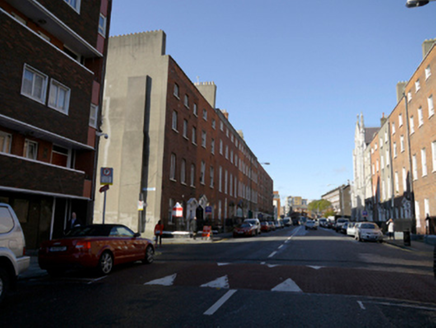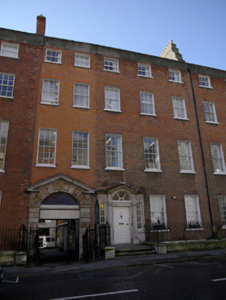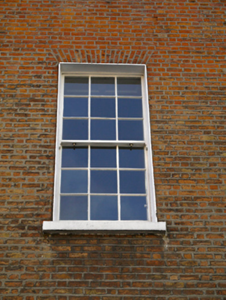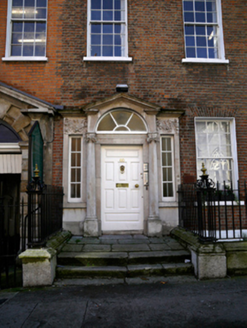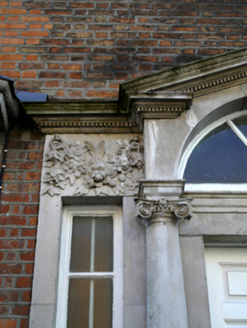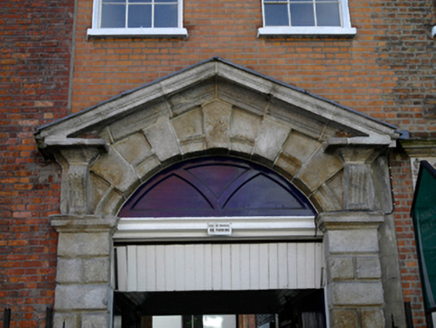Survey Data
Reg No
50010665
Rating
Regional
Categories of Special Interest
Architectural, Artistic
Original Use
House
In Use As
College
Date
1750 - 1770
Coordinates
315416, 234936
Date Recorded
25/10/2011
Date Updated
--/--/--
Description
Terraced three-bay four-storey house over exposed basement, built c.1760, with formerly freestanding pedimented carriage archway to south now having two-bay three-storey accommodation of c.1920 built above. Currently in use as language school with two-storey rendered mews house to rear of site. Pitched slate roof to front pile, two hipped sections to rear pile, set behind rendered parapet wall with granite coping. Shared cast-iron hopper and downpipe breaking through to north. Stepped cement rendered chimneystack with clay pots to north party wall. Red brick walls laid in Flemish bond with flush pointing to painted moulded granite plinth course over ruled-and-lined rendered walls to basement. Machine-made red brick walls over carriage arch. Ruled-and-lined cement rendered walls to rear elevation. Gauged brick flat-arch window openings with patent rendered reveals, painted masonry sills and replacement timber sliding sash windows throughout, six-over-six pane to lower floors and three-over-three pane to top floor. Rear elevation abutted by steel fire escape. Round-headed door opening with tripartite pedimented Portland stone doorcase. Replacement timber door with eight raised-and-fielded panels and plain stone surround flanked by engaged Ionic columns on plinth blocks with stepped lintel cornice. Spoked timber fanlight accommodated in open dentillated pediment. Slender square-headed sidelights with fixed timber glazing set on stone sills and surmounted by decorative floral stone relief and dentillated cornice above. Door opens onto granite platform with three granite steps, bridging basement area. Platform and basement area enclosed by wrought-iron railings on moulded granite plinth walls with wrought-iron corner piers. Round carriage arch with Gibbsian pedimented granite surround. Vertically-sheeted timber doors flanked by rusticated granite ashlar piers and impost mouldings, timber lintel cornice over doors with tripartite timber panel over. Scrolled granite console brackets rise from piers supporting lead-lined open pediment with intermittent blocks to granite archivolt. Rear of site is asphalted and used for car-parking accessed under carriage arch.
Appraisal
This grand townhouse was part of an extensive streetscape, of which only ten similar houses remain. Bought by physician Christopher Dominick in 1709, the land was not developed by his widow until after his death in the 1740s. The street became one of the most fashionable addresses in Georgian Dublin. While the infill over the carriage arch disrupts the symmetry and façade composition, the exquisite doorcase and carriage arch give this house additional prominence and interest while contributing significantly to the visual quality of the streetscape.
